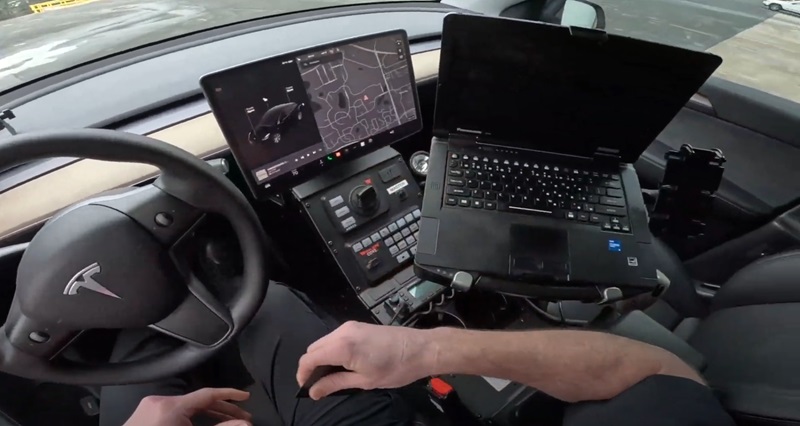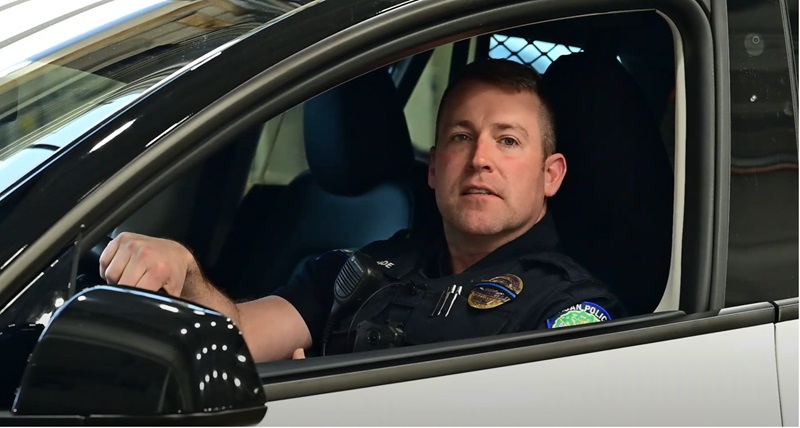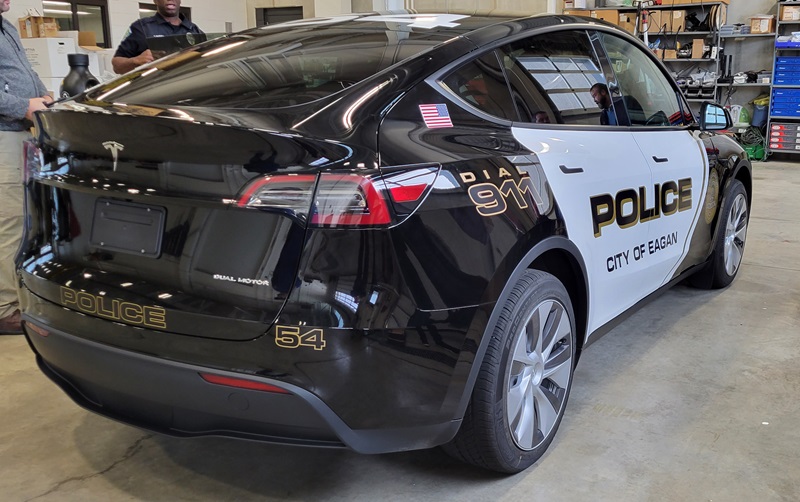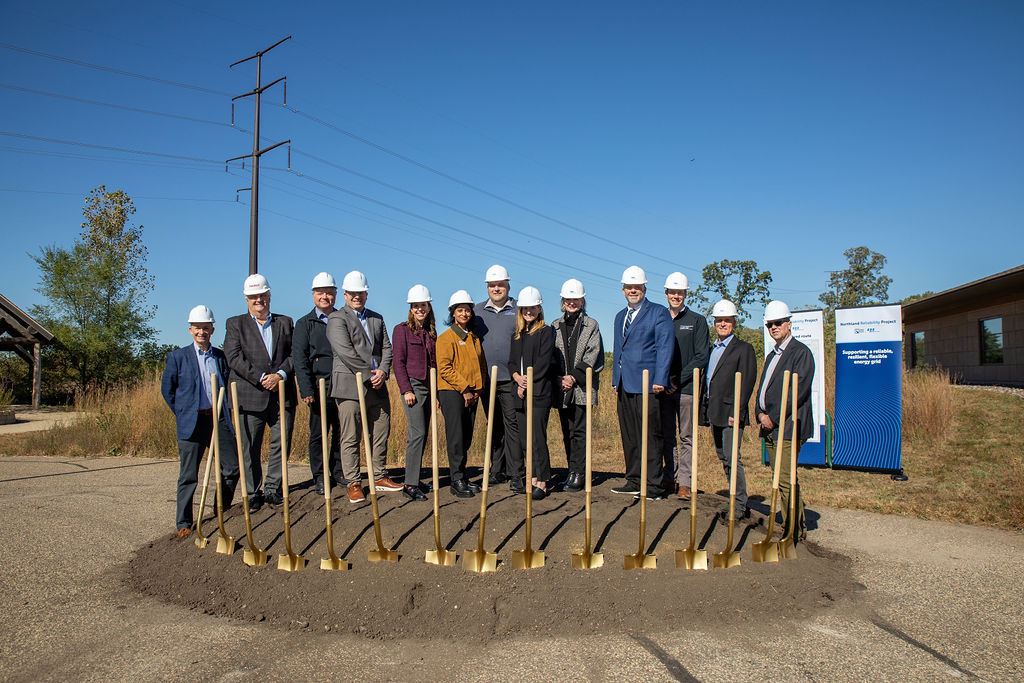The Eagan Police Department added a Tesla Model Y Performance to its fleet of squad vehicles over a year ago as part of a demonstration project and the reviews are in: “This [car] is very fast and a lot of fun to drive in a police setting.”
Those words from Detective Chris Meade were representative of the entire department’s view of the use of an electric vehicle (EV) for policework.
The patrol car was provided through a program developed by Great River Energy that offers financial assistance toward the purchase of a light-duty EV by organizations within its member-owners’ service territory.

This initiative creates opportunities to highlight the benefits of electric technology to fleet operators in real time and allows the cooperative to access vehicle usage data to develop a case study on the performance of EVs in each project application.
For this project, Great River Energy collaborated with Dakota Electric Association, which provides service to the Eagan Police Department.
“We think there’s a lot that can be learned both by the department and by us as an electric co-op,” said Dakota Electric Association Chief Executive Officer Ryan Hentges. “For our perspective, we hope to learn how and when electricity is used as well as how much electricity it takes when they do charge it.”
On the operating end, Lt. Nate Tennessen said the department was mainly interested in testing EV technology to see if it was applicable for the typical needs of police. The Tesla Model Y Performance was chosen by project partners for its range (an estimated 330 miles), interior cargo space and performance.
“We wondered if [the Tesla] would function for us throughout the winter and busy summer nights when we’re running for 20 hours,” Tennessen said. “Our vehicles have to be dependable in a suburban community because we rely on them to get us where we need to go.”
Once the EV was modified as a squad vehicle and delivered, select officers were assigned to the vehicle and used it for pursuit driving and pursuit termination technique training. Compared to other gas-fueled vehicles in the department’s fleet, the Tesla “crushes everything,” Tennessen said.
As officers continued using the EV on a day-to-day basis, they came to the conclusion that its battery performance aligned well with typical usage.

Meade, one of the officers assigned to the Tesla, noted that while a single charge can get him through a full day’s worth of work, he made charging part of his new routine.
“When I typically start the day, the vehicle will be charged to 90%, which is where we have it capped at. I would drive for roughly six hours and [the battery would] be down to between 35% and 50%,” Meade said. “I’d go back to the police department and either do my reports or have lunch, plug it in for about an hour, and that would get it back to 80% and that’d be plenty for me to finish out the shift.”
Meade echoed Tennessen’s sentiment on the vehicle’s overall performance as a patrol car: “As far as comparison to traditional vehicles, and as far as speed goes, it’s not even comparable.” The only negative comparison Meade could think of?
“It does have a little bit smaller back seat, which isn’t necessarily a problem for me, but some of the people I’ve met along the way didn’t necessarily like that,” he said, smiling.
Besides its performance, the police department is also realizing lower annual fuel expenses as 30 miles equals about $1 when using electricity compared to $3 for gasoline. Tennessen noted the department has saved about $5,500 over one year in comparison to a fuel squad car.
Another unexpected benefit is the amount of community engagement spurred by the EV being out on the road.
“I’ve talked to hundreds of people over the course of my time driving this who were just genuinely interested in learning about the vehicle, how it came to be at the police department, how we felt about it. The community engagement of this vehicle is well worth everything the mechanics went through to set it up, the city went through to get it. [That] aspect of this car is a lot of fun.”
— Eagan Police Department Detective Chris Meade
Great River Energy and Dakota Electric Association plan to use the information collected from this project to help others considering similar fleet adoption of EVs by giving them local, real-world data that can help them better understand what to expect when incorporating the technology into their own fleets.

 " data-object-fit="cover">
" data-object-fit="cover">